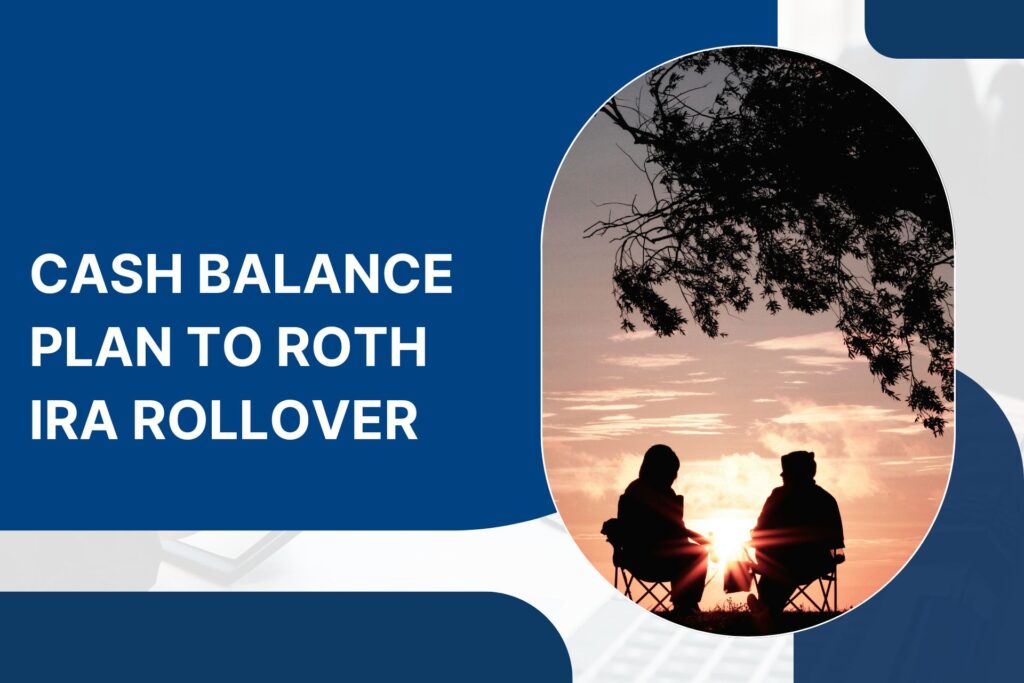Understanding the Cash Balance Plan
A Cash Balance Plan is a type of defined benefit plan that acts similarly to a defined contribution plan. Employers set aside a specified contribution each year for each employee, which grows at a fixed rate of interest. Unlike traditional pension plans, the benefits in a cash balance plan are stated as a hypothetical account balance, which makes it easier for employees to understand their benefits. Converting a Cash Balance Plan to Roth IRA can offer tax benefits and greater control over retirement funds.
Key Features of a Cash Balance Plan
- Guaranteed Benefits: The plan provides a guaranteed benefit upon retirement, which is not dependent on investment performance.
- Employer Contributions: Contributions are made by the employer and are typically based on a percentage of the employee’s salary.
- Interest Credits: These accounts earn interest credits, which can be a fixed rate or tied to an index.
- Portability: Cash balance plans offer more portability compared to traditional pension plans, as employees can take the lump sum amount and roll it into an IRA or another employer’s plan.
What is a Roth IRA?
A Roth IRA is an individual retirement account that allows for tax-free growth and tax-free withdrawals in retirement. Contributions to a Roth IRA are made with after-tax dollars, which means there is no tax deduction for contributions. However, qualified distributions during retirement are tax-free, provided certain conditions are met.
Benefits of a Roth IRA
- Tax-Free Withdrawals: One of the most significant benefits is that withdrawals are tax-free, provided the account has been open for at least five years and the account holder is over the age of 59½.
- No Required Minimum Distributions (RMDs): Unlike traditional IRAs, Roth IRAs do not require account holders to take minimum distributions at age 72.
- Flexibility: Contributions can be withdrawn at any time without penalties or taxes, offering greater flexibility in managing finances.
Converting a Cash Balance Plan to Roth IRA
Converting a cash balance plan to Roth IRA involves rolling over the funds from the cash balance plan into a Roth IRA. This process can be beneficial due to the tax advantages and flexibility offered by a Roth IRA. However, it also requires careful planning and consideration of several factors.
Steps to Convert a Cash Balance Plan to Roth IRA
- Determine Eligibility: Ensure that the cash balance plan allows for rollovers. Some plans may have restrictions or specific rules regarding rollovers.
- Choose a Roth IRA Provider: Select a financial institution or brokerage that offers Roth IRA accounts. Consider factors such as fees, investment options, and customer service.
- Initiate the Rollover: Contact the cash balance plan administrator to request a rollover. You will need to complete the necessary paperwork and provide information about your Roth IRA account.
- Manage the Tax Implications: converting cash balance plan to Roth IRA is a taxable event. You will owe income tax on the amount rolled over. It is crucial to plan for this tax liability to avoid unexpected financial burdens.
- Invest the Funds: Once the rollover is complete, decide how to invest the funds within your Roth IRA. Consider a diversified portfolio that aligns with your retirement goals and risk tolerance.
Tax Considerations
When converting cash balance plan to Roth IRA, the amount rolled over is subject to income tax. This can result in a significant tax bill, depending on the size of the rollover and your tax bracket. It is advisable to consult with a tax advisor to understand the implications and to plan accordingly.
Strategies to Mitigate Tax Impact
- Partial Rollovers: Consider doing partial rollovers over several years to spread out the tax liability.
- Roth Conversion Ladder: Implement a Roth conversion ladder strategy to convert portions of the funds incrementally while managing your tax bracket.
- Utilize Deductions and Credits: Take advantage of any available tax deductions and credits to offset the tax liability.
Calculate your Retirement Plans Today!
Advantages of Converting to a Roth IRA
- Tax-Free Growth: Enjoy the benefit of tax-free growth on your investments within the Roth IRA.
- Flexibility in Retirement: With no required minimum distributions, you have more control over your withdrawals and can better manage your retirement income.
- Estate Planning Benefits: Roth IRAs can be passed on to heirs without immediate tax consequences, making them an excellent tool for estate planning.
Potential Drawbacks
- Immediate Tax Liability: The primary disadvantage is the immediate tax liability incurred during the conversion process.
- Impact on Financial Aid: For those with college-bound children, the increased income from a Roth conversion could impact eligibility for financial aid.
- Market Timing Risks: Cash Balance Plan to Roth IRA during a market high could result in paying more taxes on the same number of shares compared to converting during a market low.
Conclusion
Converting a cash balance plan to Roth IRA can be a strategic move to maximize tax-free growth and gain greater flexibility in retirement. However, it requires careful consideration of the tax implications and a well-thought-out plan. By understanding the process and working with financial and tax advisors, you can make informed decisions that align with your long-term financial goals. The advantages, such as tax-free withdrawals, no required minimum distributions, and estate planning benefits, often outweigh the drawbacks, making the conversion a beneficial strategy for many individuals.


